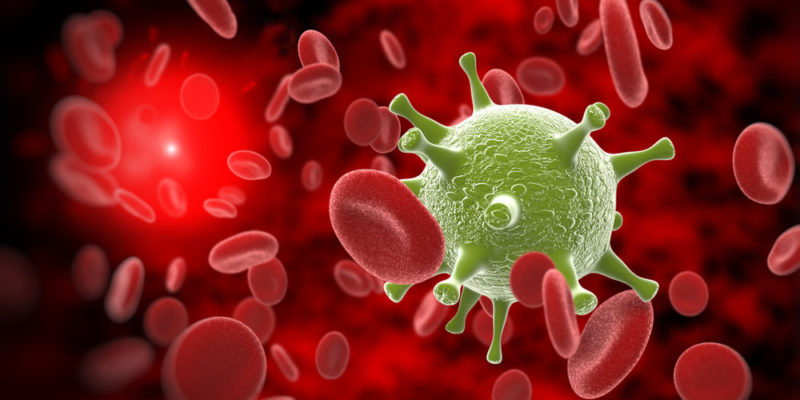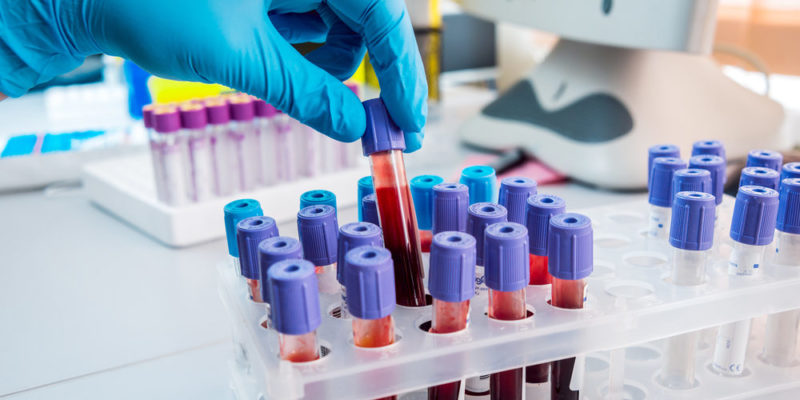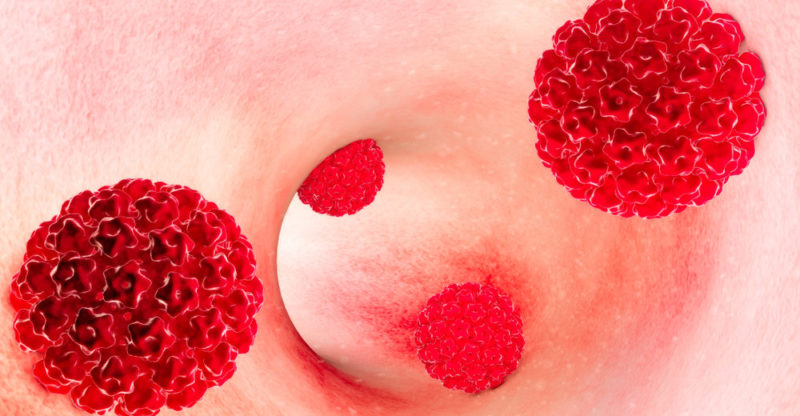We explain what sexually transmitted diseases are, what their causes and consequences are. In addition, its characteristics and classification.
What are sexually transmitted diseases?
Sexually transmitted diseases (STDs), venereal diseases or also sexually transmitted infections (STIs) are a set of clinical and infectious diseases .
They are characterized in that their transmission from one person to another occurs almost exclusively through genital contact , that is, sexual intercourse.
Most of them can also be transmitted by other forms of fluid exchange , such as transfusions or the use of contaminated syringes , and can even pass from mother to child during pregnancy, childbirth or breastfeeding.
They are caused by various pathogens, such as bacteria , viruses , protozoa and fungi , depending on each one.
Sexually transmitted diseases are as old as humanity.
However, its control and eradication has been difficult due to the taboo that exists in most cultures around sex. This despite the fact that some, such as syphilis, even became famous and associated with the bohemian life of artists and poets.
How are STDs classified?

Sexually transmitted diseases can be classified according to whether they are caused by a virus, bacteria, fungus, or protozoan .
What type of microorganism causes them also affects their symptoms, their treatment and other clinical aspects.
Another way of classifying them could be based on their possible cure , HIV-AIDS being the only one that currently lacks a cure, although there are already viable treatments to make the disease bearable.
Causes of STDs
Every disease is due to the entry into the body of a pathogenic agent (virus, bacteria, etc.).
In the case of STDs, this entry occurs through the exchange of fluids that occurs during sexual intercourse. This involves all forms of sex: anal, genital and oral.
However, there are also other routes of infection such as contaminated blood transfusion , the use of syringes or even underwear worn by a sick person, depending on the type of infection in question.
Consequences of STDs

Sexually transmitted diseases can have various consequences. In some cases they are fatal if they do not receive medical attention , while others can go unnoticed, and some are especially annoying in their symptoms.
But in general, these diseases almost always entail some serious risk for genital and reproductive health , and can cause sterility, menstrual irregularities, deformities in the fetus, painful urination or painful sexual intercourse.
In other cases, they can cause urological, genital or other body organ damage , and can even lead to other complications and much more serious or permanent diseases.
Prevention for STDs

The vast majority of sexually transmitted diseases are prevented through basic rules of sexual conduct , so sex education is imperative in the fight against them.
A population with little education regarding sexuality will be more likely to become infected and less able to recognize the symptoms in their body or that of their sexual partner.
The basic rules of sexual conduct mentioned above are:
- Use a condom (condom). The condom not only protects against unwanted pregnancy in a high percentage (98%), but also prevents the exchange of fluids essential for the spread of STDs.
- Maintain proper genital hygiene. The sexual organs, as well as any lower part of the body, require daily hygiene and proper drying, to avoid conditions conducive to bacterial or fungal infections.
- Avoid sharing underwear. Simply as a precaution, such garments should be intimate and disposable. In stores, underwear should not be able to be tried on or returned.
Syphilis
 One of the best-known STDs in human history, syphilis is caused by the bacterium Treponema pallidum .
One of the best-known STDs in human history, syphilis is caused by the bacterium Treponema pallidum .It was a very frequent infection in practically all the cultures of the five continents until the discovery of penicillin and antibiotics in the 20th century . It was a disease closely associated with the bohemian and artistic life , since poets and painters used to frequent the houses of prostitution in past centuries.
The disease manifests itself through symptoms that can vary in frequency and intensity throughout the stages of infection, but usually involve ulcerations on the genitals and red spots on the body.
Without treatment, it progresses over the years, spreading throughout the body and affecting the nervous system and the circulatory system , and can lead to certain forms of insanity.
Gonorrhea
Also called gonorrhea, blenorrhea or gonorrhea, it is a sexually transmitted bacterial disease caused by the gonococcus Neisseriagonorrhoeae .It affects the mucous membranes of the genital and urinary systems , and can also spread to the rectum, the pharynx and even the ocular mucosa.
Its main symptom is a foul-smelling purulent secretion from the genitals , painful urination and genital pain (testicular pain), which can cause urethritis, prostatitis, endometritis, vaginitis and other secondary ailments.
It is one of the most widespread infections on the planet : the WHO estimates that around 106 million new cases occur each year, despite the fact that it responds to antibiotic treatment.
Left unattended, it can cause sterility and blindness in newborns.
Chlamydia
 It is caused by the intracellular bacterium Chlamydia trachomatis .
It is caused by the intracellular bacterium Chlamydia trachomatis .It presents the complication that it can be asymptomatic, or it can cause a symptomatological picture of genital (and even anal) secretions, burning during urination and painful sexual intercourse, itching and genital inflammation, or intermenstrual bleeding.
It can even affect the throat and the mucous membranes of the mouth , producing sores and burning sensations.
Chlamydia is detectable by very specific laboratory tests , since being an intracellular bacterium, it presents unique reproductive conditions. It can be associated with other types of infection such as pneumonia, conjunctivitis, ocular trachoma or lymphogranuloma venereum.
Trichomoniasis
Trichomoniasis is a genital infection caused by the protozoan Trichomonisvaginalis , which is a human parasite.Its presence causes common symptoms of genital infection, such as pain when urinating and discharge from the penis in men , and unusual vaginal discharge in women, with an unpleasant smell, green or gray color, itching, burning, redness of the vulva and the vagina.
In many cases, however, the disease is asymptomatic .
Although men are able to naturally expel the parasite in 14 days , women will remain infected until treated.
HPV
 One of the most common and widely distributed sexually transmitted infections in the world is the Human Papillomavirus . It is caused by a large family of DNA viruses known as the Papillomaviridae .
One of the most common and widely distributed sexually transmitted infections in the world is the Human Papillomavirus . It is caused by a large family of DNA viruses known as the Papillomaviridae .Five genera of this family of viruses infect the skin and mucous membranes of humans , encompassing 170 different types. Among them there are two sets of strains that are spread by genital routes:
- Some more moderate strains, which cause bothersome warts visible to the naked eye, which can be burned or surgically removed. They usually remit in 70% of cases after one year of infection and in 90% after two years, without the need for further treatment. Still, warts carry significant social and emotional stigma.
- Much more aggressive strains (16, 18, 31 and 45), which instead of warts cause flat lesions. They are visible when exposed to vinegar, and their permanence in the tissue causes cellular changes that have been linked to cancer of the penis, anus, and head and cervix.
Fortunately, there is already a vaccine against the most virulent strains of HPV.
HIV AIDS
The most complex of the STDs and the only one listed here that is incurable .
It is caused by the presence of the retrovirus called Human Immunodeficiency Virus (HIV), which can remain dormant for years , allowing contagion but without causing illness.
At some point, the virus triggers Acquired Immune Deficiency Syndrome (AIDS) . It destroys the cells of the immune system and thus opens the way to other possible diseases that could cause death to the patient.
HIV is spread sexually or by exchange of fluids such as blood , semen, vaginal discharge, but not by direct contact or saliva (since the retrovirus is in low numbers in it).
The appearance of this disease in the 1980s gave rise to numerous speculations about its origin . During the first decades it was difficult to diagnose and treat because it was linked to homosexual groups or drug addicts.
Today there are numerous chronic treatments against HIV , which allow the presence of the retrovirus to be reduced to minimal levels.
In this way, the rates of contagion from a seropositive person (infected with the virus) to a healthy one are very low. That's why even some HIV+ women can get pregnant and have healthy children , as long as they don't neglect their medication.
The above content published at Collaborative Research Group is for informational and educational purposes only and has been developed by referring to reliable sources and recommendations from Medical experts. We do not have any contact with official entities nor do we intend to replace the information that they emit.
MA student of the TransAtlantic Masters program at UNC-Chapel Hill. Political Science with a focus on European Studies. Expressed ideas are open to revision. He not only covers Technical articles but also has skills in the fields of SEO, graphics, web development and coding. .
Leave a reply
Your email address will not be published. Required fields are marked *Recent post

Sport: What Is It, Types, Risks, Features, Characteristics and Examples

Dogs: Emergence, Features, Characteristics, Feeding and Breeds

Story: Definition, Elements, Structure, Features and Characteristics

